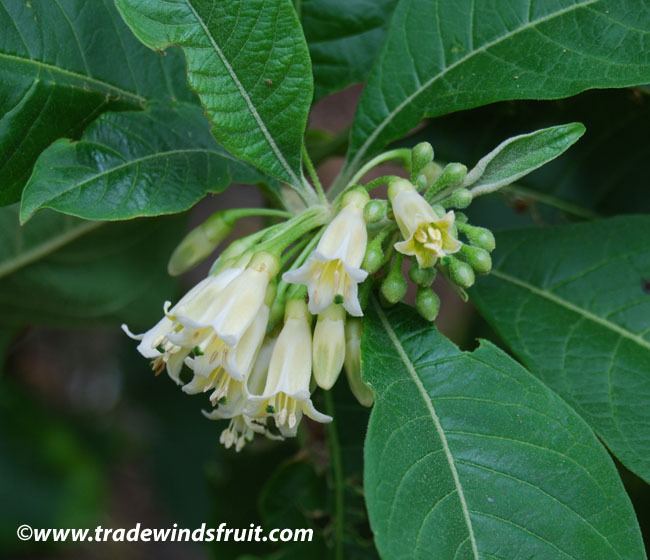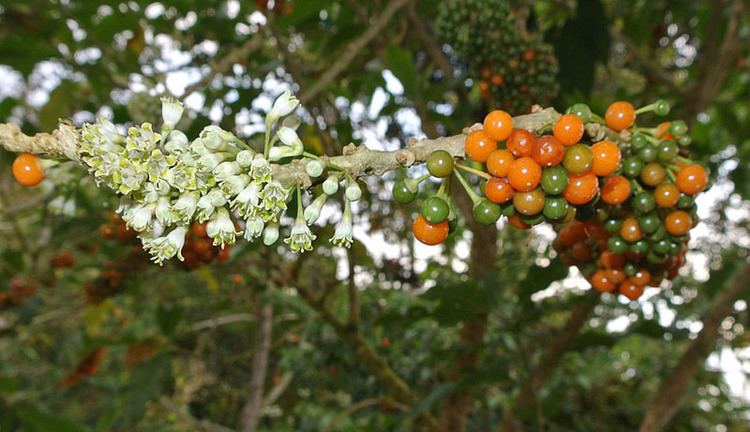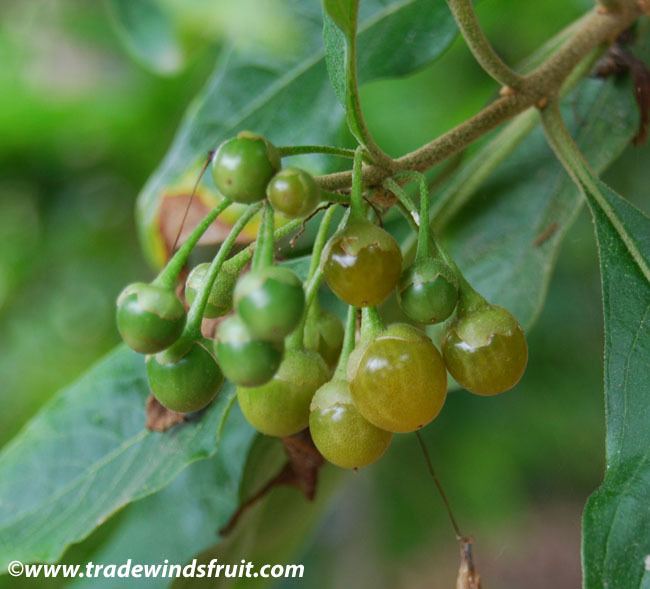Kingdom Plantae Family Solanaceae Scientific name Acnistus arborescens Rank Species | Order Solanales Genus Acnistus Higher classification Acnistus | |
 | ||
Similar Acnistus, Nightshade, Nylandtia, Eugenia victoriana, Alberta magna | ||
Fruta do sabi acnistus arborescens
Acnistus arborescens is a species of flowering plant in the nightshade family, Solanaceae. Common names include gallinero, hollowheart, wild tobacco, siyou, bastard sirio, galán arbóreo, tabaco de monte, nigüito, marieneira, and tabak djab.
Contents

Description

A. arborescens is a large shrub or tree up to 10 meters in height. It flowers in clusters on naked branch parts below the leaves. Leaves are alternate, simple, elliptical, narrow to a long v-shape at the base, variably narrowed to a point at the tip, 15 to 30 cm long and 5 to 15 cm wide, margins entire or slightly wavy, hairless except when young. Young stems and young leaves have rusty hairs. The fragrant flowers bloom in clusters of 30 or more, with broadly funnel-shaped tubes about 1.2 cm long and recurving lobes. The protruding stamens are greenish-white to cream. The bright orange fruit is round, and about 1 cm across. They flower sporadically throughout the year, with fruit generally from March to July.
Distribution and habitat

It is native to Central and South America, and the Caribbean. In Puerto Rico and the United States Virgin Islands, it is classified by the US Department of Agriculture as a native plant species.
Ecology
A. arborescens contains a fragrant compound also found in roses and Narcissus tazetta called orcinol dimethyl ether that is almost undetectable to the human nose. However, experiments show that honeybees can readily detect it.
Cultivation
A. arborescens is grown as an ornamental tree for gardens and natural landscaping projects to attracting various species of birds, a use from which it gets its Brazilian common name "thrush fruit".
